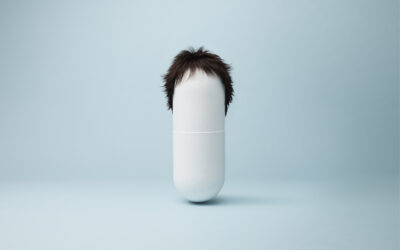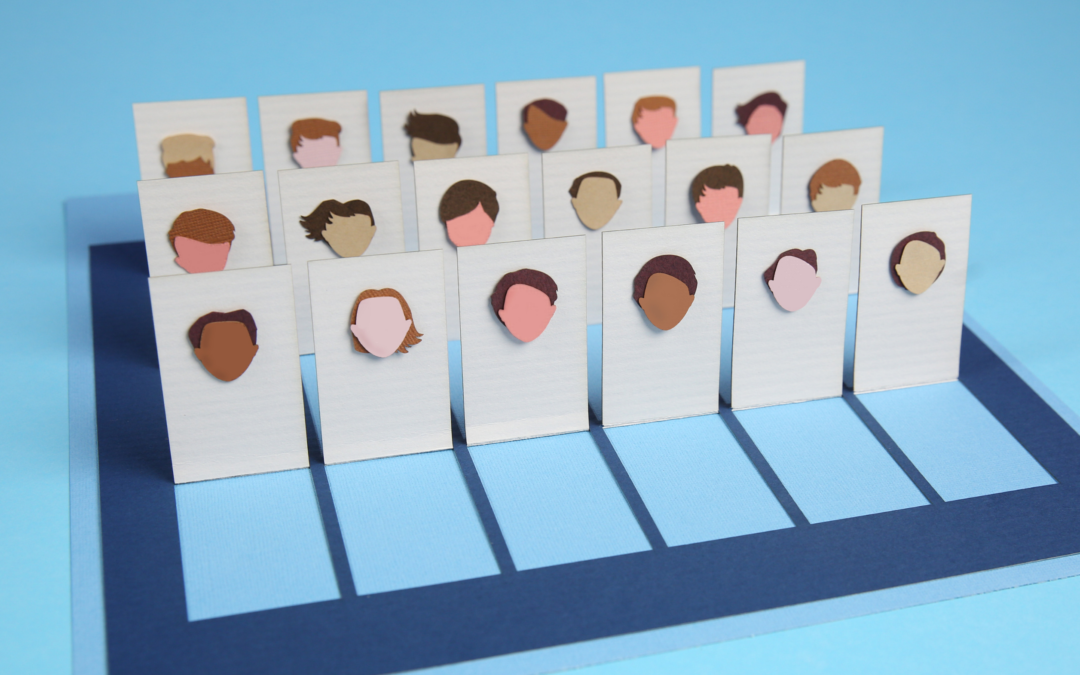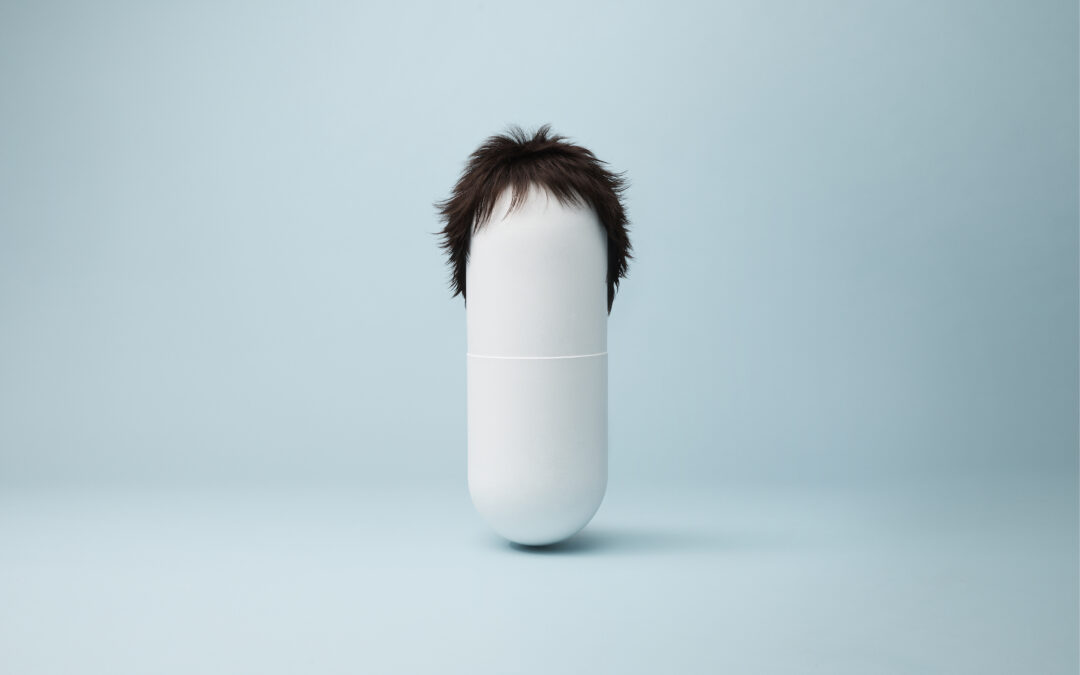What is Male Pattern Baldness?
Male pattern baldness (MPB) is the most common type of hair loss for men. About half of all men experience it by the age of 50 and by the age of 70, that number jumps to 80%.
For many men, male pattern baldness can begin in their 20s but it’s so gradual that they don’t recognise that it’s happening.
And that’s a shame — because the earlier you recognise the signs of male pattern baldness, the earlier you can start treatment to slow your hair loss.
So let’s take a look at the signs and stages of male pattern baldness, along with the causes and possible treatments.
If you are looking for more information on Mens Hair Loss Treatment – you can find it here
What Causes Male Pattern Baldness?
Hair loss can have many causes but male pattern baldness in particular is a hereditary condition, which means genetics are ultimately responsible.
So how does it work?
Your scalp contains hundreds of thousands of little sacs, called follicles. Hair grows from these follicles.
Over time, follicles can become sensitive to male hormones called dihydrotestosterone (DHT). Your genes determine how sensitive they will be.
This sensitivity causes the follicles to shrink, which leads to:
- Shorter and finer hair
- A shorter hair growth stage
- A longer hair shedding phase
- The production of fewer hairs — or none at all
Your follicles don’t die, which means they can still grow new hair if stimulated with the right medication.
Signs of Male Pattern Baldness
Male pattern baldness follows a distinctive pattern (surprise, surprise). It usually starts as a receding hairline and can progress to full-blown crown balding.
Though it can begin in puberty, it more commonly starts when a man is in his twenties or thirties and progresses over years or even decades.
| Typical Signs of Male Pattern Baldness | Typical Signs of Another Hair Loss Type |
| Thinning at temples and on the crown, receding hairline | Diffuse thinning all over |
| Hair loss confined to the head | Hair loss in eyebrows, eyelashes, or hair at the sides and back of head |
| Gradual hair loss | Sudden hair loss |
The Norwood Stages of Male Pattern Baldness
The Hamilton-Norwood Scale is a clinical scale dermatologists and hair loss doctors use to track the progress of male pattern baldness.
It follows seven clear stages of male pattern hair loss and helps identify possible treatment options.
Importantly, it’s not a predetermined pattern. Hair loss is entirely personal and not all men will reach Stage 7 on the scale.
Stage 1
A head full of hair. There’s little evidence of hair loss anywhere on the head. Most teenagers and many men in their early 20s are at Stage 1 on the scale but few men stay here throughout their life.
Stage 2
Mild but visible hair loss appears at the temples but your crown remains untouched There may be a noticeable M or V shape to the hairline.
This is a good time to take action to prevent further hair loss — we explain more about treatment options below.
Stage 3
An obvious receding hairline develops around the temples, creating a clearly defined M-shaped hairline. Thinning or hair loss at the crown (top of the head) may also start to occur.
It may still be possible to halt and reverse hair loss at this stage with the right hair loss medication.
Stage 4
The hair loss begins to gather pace. The hairline recedes further, often accompanied by further hair loss on the crown (with a strip of hair between the patches of hair loss). The recession may start to look like a U shape from above.
Stage 5
The receding hairline is almost connected to the bald spot on the crown with a thinner strip of hair between them.
Stage 6
The hairs between your temples and crown disappear entirely, forming a defined U-shaped hairline. The top and front of your head are now mostly bald but there may still be hair on the sides.
Stage 7
The hairs on the sides of your head begin to thin out and those that grow are weak and thin.
Treatments for Male Pattern Baldness
Many men are happy to live with male pattern baldness. Many others would prefer to hide it, treat it, or slow down its progression. While there are no cures for male pattern baldness, there are some effective treatments.
Cosmetic Treatments
Let’s start with the obvious.
Hairpieces may help hide hair loss (they were good enough for Bert Newton, after all). But they’re rarely inconspicuous. And they don’t reverse hair loss.
Fortunately, there are some male pattern baldness treatments that can help stop hair loss and accelerate hair regrowth.
Hair Loss Medication
The most common hair loss medications for male pattern baldness are finasteride and minoxidil.
While they’re some of the most effective hair loss treatments, it takes time for results to appear — generally 4 months or longer. Hair loss returns when you stop using either medication.
Finasteride is a prescription pill that can help reduce the levels of DHT in your body. Minoxidil is an over-the-counter topical treatment that promotes blood flow to the scalp to stimulate hair growth.
It’s important to remember that every person experiences hair loss differently. So the most effective treatment is one that is personalised to you.
The Hairy Pill® is a personalised hair loss treatment that contains active ingredients to help stop hair loss and promote regrowth. It is also made with a customised cocktail of vitamins, essential elements and amino acids to support and improve hair health.
Hair Loss Procedures
A variety of procedures have emerged to treat hair loss but they can be costly and complicated. There’s also insufficient evidence that many of these treatments are effective.
- Hair transplant surgery — hairs are surgically removed from the back of your head and implanted in areas of the scalp affected by hair loss over multiple sessions.
- Platelet-Rich Plasma (PRP) — your own plasma is drawn from your blood and injected into the scalp over a series of treatments to stimulate hair growth.
- Low light laser therapy (LLLT) — low-intensity light is applied to the scalp, targeting biochemical processes that renew the cells responsible for hair growth
Natural Male Pattern Baldness Treatments
Many men search for ways to treat male pattern baldness naturally, including through hair growth supplements, scalp massages, or acupuncture. These treatments have largely not been proven to be effective.
Common Misconceptions About MPB
We’ve all heard the rumours and old wives’ tales* about male pattern baldness. Here are some of the most common misconceptions we hear — and our answers to set the record straight.
*We’ll nip this in the bud. The baldness gene is NOT inherited from the ‘old wives’ or the mothers in the family. The state of your maternal grandfather’s hair will not necessarily determine your own hairy future.
Stress Speeds Up Male Pattern Baldness
It’s true that stress may cause hair fall — but it’s a different type of hair loss (called telogen effluvium). This type of hair loss is usually temporary and caused by extreme physiological or emotional stress.
Normal, everyday stress will have no impact on the state of your locks and no amount of stress causes or speeds up male pattern baldness. It’s all predetermined by genetics.
Wearing Hats Can Cause Baldness
There’s no scientific evidence that donning a fedora or sporting a sombrero will lead to baldness. The same goes for hair products or dyes.
The chemicals in the products or the friction of the hats may weaken your hair but they won’t cause male pattern baldness.
Nor will these things stop your scalp from ‘breathing’. Oxygen is delivered to your follicles via the bloodstream, not from outside air. So go ahead and bust out your boater or beret.
Only Older Men Go Bald
It’s true that age may accelerate baldness. But if you have a family history of male pattern baldness, you could start to go bald as early as your thirties and the signs of balding begin long before that.
Male Pattern Hair Loss Is Permanent
The genetic condition that causes male pattern baldness is incurable. But there are ways to prevent further hair loss and even promote regrowth — as long as you catch it early. Hair loss that is in the later stages of the Norwood scale may be permanent.
The only way to find out how much hair you can regrow is to start your hair loss treatment.
Luckily for you, The Hairy Pill® makes it easy. It only takes a few minutes to apply for a simple one-pill-a-day treatment and you can do it right here, right now. Get started.





